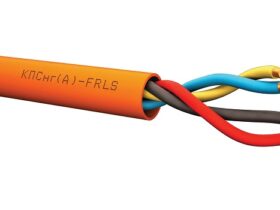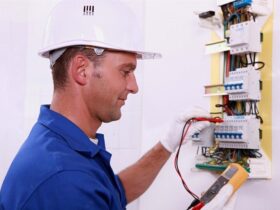So, you have built a house, that is, made walls, a roof, etc.. But we must not forget about the most important thing — electricity. Until the interior decoration work is done, you need to lay cables for switches, sockets, etc. Of course, you can invite a specialized organization (company), but for those who want to do it with their own hands, a few little tips. I’ll make a reservation right away, if you have zero electricity at all, it’s better not to even take it.
In order for everything to be legal, you need to take the technical specifications for the power supply of your home from the power supply organization. For this, many power grid companies have created special departments for work with the population. Based on the technical specifications, a project is drawn up, which you will be guided by further.
Decide immediately how much power your home will consume. To do this, add up the loads in the house (TV, refrigerator, microwave oven, light bulbs, etc.) and multiply by the switching factor — about 0.6. By the way, you can save a lot if you initially included in the estimate not ordinary incandescent lamps, but LED ones. The most proven lamps on the market today are philips lamps, which you can buy without even leaving your home — simply by ordering online.
So, back to the calculations. Example: TV — 65 W, refrigerator — 230 W, microwave oven — 1200 W, 3 bulbs — 300 W. Total: 65 + 230 + 1200 + 300 = 1795. We multiply the result by 0.6 and get 1077 watts. So, you need an authorized power of 1000 watts. Typically, a medium-sized house with a standard set of household appliances consumes about 3.5 kW.
Then we think, what kind of input to the house is needed, single-phase or three-phase? For an ordinary person, a single-phase input is enough, especially since there are currently a lot of single-phase equipment for home use (drills, grinders, planers, etc.), but if you decide to connect powerful machines or something else powerful, — you you need a three-phase input, we will stop at it.
To enter the power cable into the house, determine the place where it will be, the input itself and where the box with switching, protective devices, and also a metering device will be located. The project will indicate what kind of meter should be, induction or electronic.
Now about the assembly of the box. Modern switching and protective devices are installed on a DIN rail. If you buy a box from a specialist store, it will already be installed. The ratings of machines, RCDs and other devices will be indicated in the project. Wires for switching devices in a box, it is better to take copper, single-core, in PVC insulation, with a diameter of 6 mm, for an authorized power of 3.5 kW
It is better to take the cable for the power input from the support to the distribution box AVVG 4×16 (four cores of aluminum wire with a diameter of 16 mm), or a special wire for the power input — SIP 4×16. If you make an input with an AVVG cable, it must be tied with clamps to the supporting cable, the cable must be grounded. We will dwell on the ground loop further. SIP wire is self-supporting.
Now about the residual current device (RCD). It is used for protection against electric shock. Works on the principle of differential current flow, which leads to the appearance of voltage in the electromagnet and disconnection of the load.
More simply: If a person or an animal touches the working phase, e-mail will flow through his body. current (leakage current) and as soon as it approaches the cut-off current (for example 30 mA), the RCD will disconnect the load. It is very important to remember that the RCD does not work from a short circuit of the load. For this, a 3-phase automatic is used. Currently, the industry produces an RCD combined with an automatic machine in one case (VDT).
An important device is the protective earthing housing. It is connected directly to the body of the switch box, to the neutral wire from the line, to the body of the connected equipment, to the carrying cable. The classic ground loop consists of four rods (electrodes) made of reinforced steel, 12mm in diameter and 2.5m long, driven into the ground at a distance of 2.5m from each other, and interconnected by rolled steel with a diameter of 10mm. The connection between the electrodes and the steel bar is made only by welding. The resistance of the device should be no more than 30 ohms. If it is larger during measurement, one more electrode is achieved, etc. Measurement of grounding resistance is carried out by an organization licensed for these works. Based on the measurement results, a protocol is drawn up. Further measurements are taken every six years..
Modern power supply to a residential building is provided for 3-phase sockets using a 5-wire circuit, and for 1-phase sockets — using a 3-wire circuit. Lighting can be connected from a separate single-phase machine.
A three-core cable with a diameter of 2.5 mm is suitable for wiring to rooms. If the house is wooden, the cable must be laid in a fireproof box or in a metal hose. In a brick house, it can be fixed directly to the wall with clamps and under plaster.

















Оставить коммент.